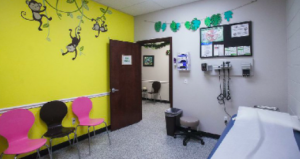School-based health centers make it convenient for students to leave class and walk down the hall for therapy, a medical checkup, or a dental appointment.
Many school districts are trying to address that problem by putting more counselors, nurses, and social workers in schools with their share of federal COVID funds, according to a Chalkbeat analysis of spending plans. Adding new school-based health centers would make those efforts more effective, experts say, because the centers are better equipped to assist with the most complex cases, freeing up school staff to handle other needs.
What is a school-based health center?
Watch: Corners Health innovative care model- Moving Medicine
To continue reading, CLICK HERE.
Written by: Koby Levin, Chalkbeat Detroit
April 11, 2022

